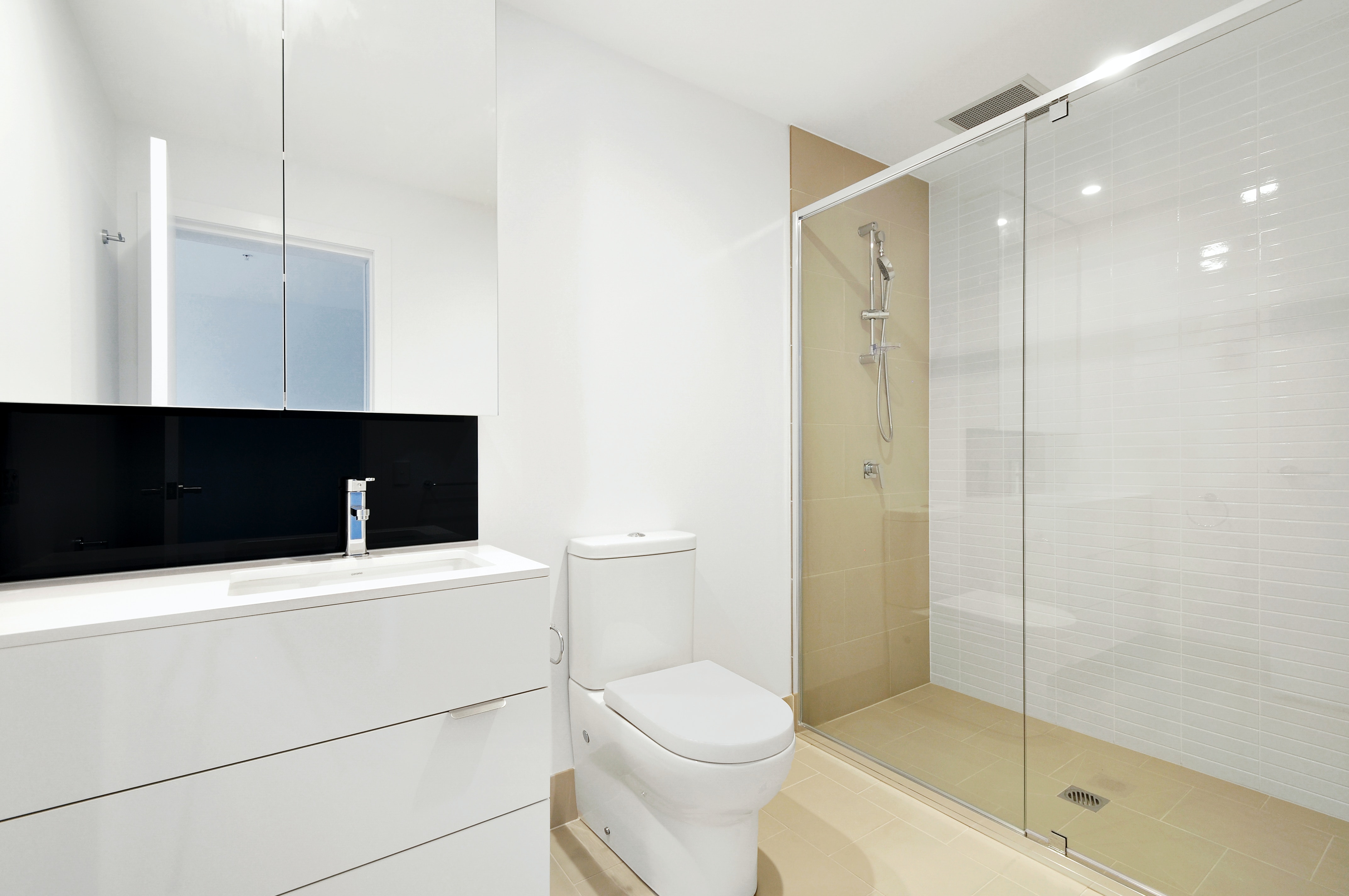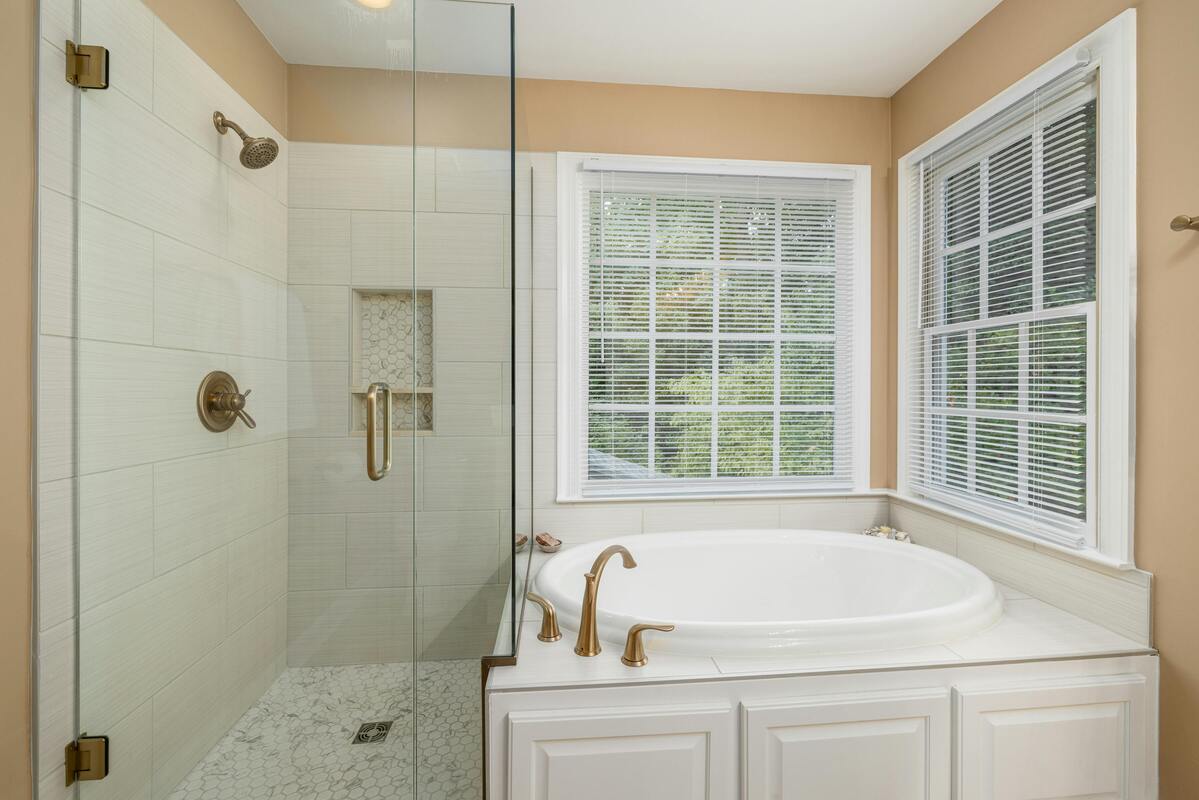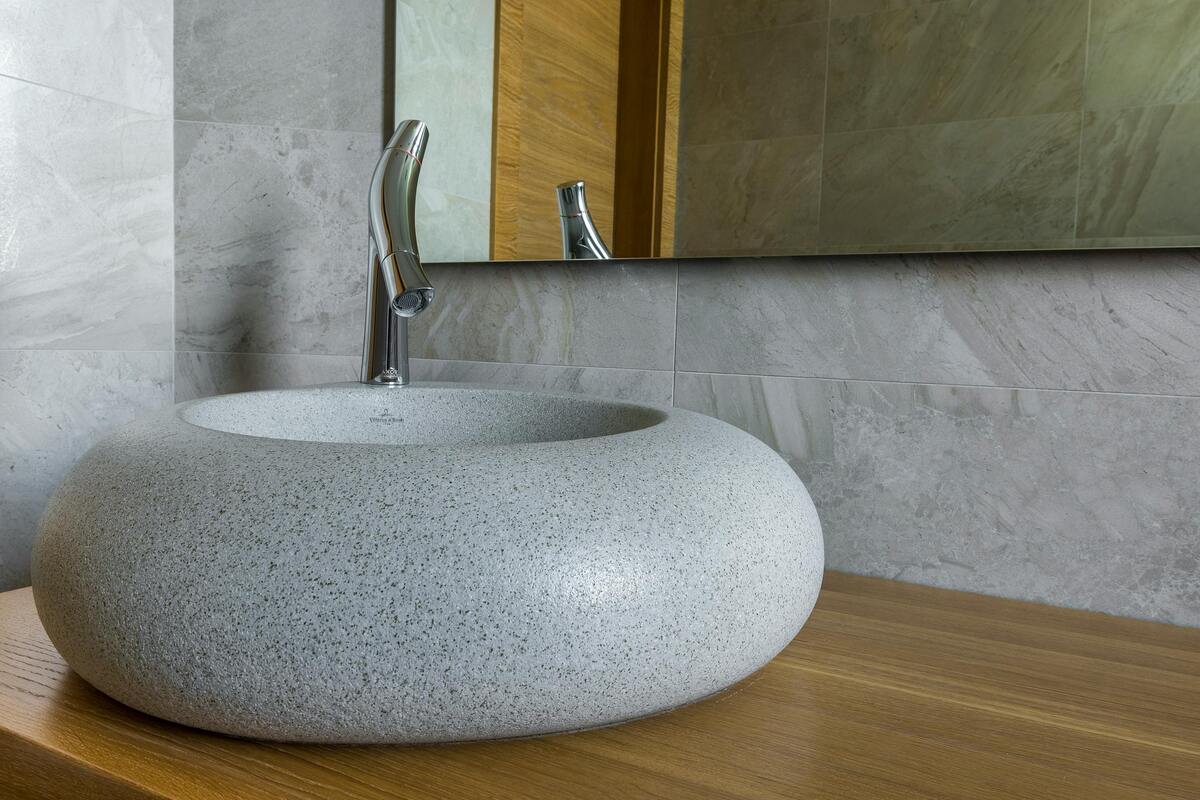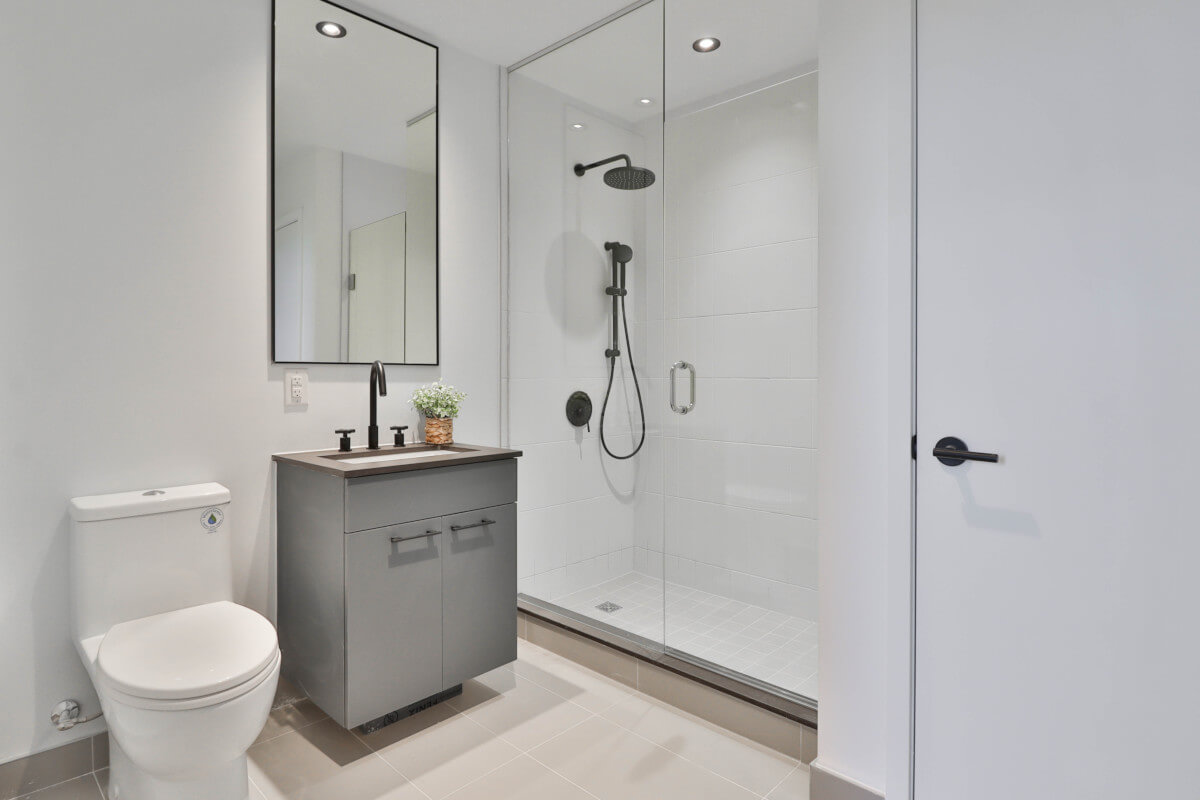Bathroom Ventilation: A Comprehensive Guide

Introduction
In this article, we will be taking a deep dive into the essential and often overlooked area of bathroom ventilation.
We will look at the types of ventilation available, particularly the bathroom extractor fan. We will investigate their installation and cost to help you decide how best to eliminate condensation and keep your bathroom well ventilated and mould-free.
Key takeaways: Bathroom ventilation
- Proper bathroom ventilation is essential to prevent condensation, mould growth, and unpleasant odours, which can damage bathroom fittings and negatively impact health, especially for allergy and asthma sufferers.
- According to UK Building Regulations Document F, all bathrooms must have extract ventilation to the outside, either via a window, intermittent extract system (like a fan), or a continuous system (such as MVHR).
- Bathrooms vs. sanitary accommodation: Rooms with only a toilet (sanitary accommodation) require a lower extraction rate (6 litres/second)
- Windows help but are insufficient alone: Good windows (double/triple-glazed, tilt and turn) can improve air quality, but most bathrooms still require mechanical extraction to meet regulations.
- Types of mechanical ventilation: Options include extractor fans (axial, centrifugal, inline) and whole-house systems like MVHR, which filters and recycles air but is costly and mainly suited for new builds or major refurbishments.
Why is proper bathroom ventilation important?
The bathroom is arguably one of the hardest-working rooms in the house. However, hot showers and baths create a lot of water vapour and excess humidity, which, if left unattended, can cause condensation and mould.
Mould can exacerbate allergies and asthma and cause respiratory infections. Excessive condensation and mould can also reduce the longevity of bathroom fittings and create odour.
Letting in fresh air to improve air quality is the best way to keep moisture, mould, and condensation at bay.
Therefore, it is essential to ensure that bathrooms have proper ventilation. Simply opening a window won’t cut it.
All bathrooms are required by Document F of the Building Regulations 2010 to have some form of extract ventilation to the outside, whether that be an openable window, an intermittent extract system like a fan or a continuous extract system like a MVHR (Mechanical Ventilation with Heat Recovery).
What is the regulation for bathroom ventilation?
Document F of the Building Regulations 2010 outlines how buildings and rooms, including bathrooms, should be ventilated.
Some crucial points are:
- Extract ventilation terminals and fans must be installed “as high as practicable in the room” and “a maximum of 400mm below the ceiling”.
- In bathrooms the minimum extraction rate of intermittent extract systems is 15 litres per second and eight litres per second for continuous extraction systems.
- Exhaust outlets, such as the vents from extractor fans, should be located so that the reentry of exhaust air into the building and surrounding buildings is minimised. There should also be no harmful effect on the surrounding area.
2022 updates to Approved Document F: Ventilation of the Building Regulations
The updated Part F emphasises the importance of good indoor air quality, especially as homes become more airtight due to other energy efficiency regulations.
Increased Equivalent Area (EA): The required equivalent area for background ventilators (like trickle vents in windows or wall vents) has increased significantly. For bathrooms, it’s now generally 4,000mm² EA.
For more details, see the full updates in the government’s statutory guidance – Ventilation: Approved Document F.
The difference between bathrooms and sanitary accommodation
If your bathroom only contains a toilet, it is classed as sanitary accommodation and only needs an extraction system that offers six litres per second of intermittent or continuous extraction. This can be provided by a window or a mechanical extraction system.
However, rooms that contain a shower or a bath are considered bathrooms. Bathrooms must have an extraction system that offers 15 litres per second of intermittent extraction or eight litres per second of continuous extraction. This means it is more likely you will require a mechanical ventilation system in your bathroom to meet regulations.
Types of ventilation
Windows
Windows are one of the key things to look at when considering bathroom ventilation. Investing in good bathroom windows can make a lot of difference in improving air quality in a space.
Double or triple-glazed tilt windows and turn opens can maximise airflow.
However, to meet regulations, most bathrooms will require a mechanical extraction system, so windows alone will not suffice.
MVHR
MVHR systems are mechanically designed to shift air from polluted sources (kitchens, bathrooms, etc.), filter it, and recover its heat before dissipating the filtered air throughout the house. This is great for regulating humidity levels and helps remove moisture from areas like bathrooms.
MVHRs are a lot of work to install and tend only to be an option when building a new home or undertaking refurbishments where they can be appropriately integrated into the planning.
The average cost of an MVHR is £6450, with the cost of fitting one into a pre-existing home being more. As a bathroom ventilation solution, installing a MVHR is, therefore, not suitable in most instances.
Extractor Fans
A bathroom extractor fan will be the best and most cost-efficient option for most bathroom ventilation.
A bathroom extractor fan simply removes damp, stale air so that new air can enter the room. They often turn spring into action as soon as you turn on the light switch.
Types of bathroom extractor fan
There are several different types of domestic extractor fans. You will have to decide which is best for your bathroom.
- Axial extractor fan: An axial extractor fan connects directly through an external wall. They are best when extracted air needs to be moved a shorter distance. Having an axial extractor fan installed is usually more straightforward because of this.
- Centrifugal extractor fan: A centrifugal fan is best when a bathroom is not close to an external wall (usually over 1.5 metres away). Centrifugal extractor fans can move air long distances through their ducting and offer more power than axial fans.
- Inline extractor fan: An inline extractor fan is best used to extract air at longer distances. They are located in a ceiling void or loft above a room which often makes them quieter. They are perfect for use with long duct runs.
Size
Domestic extractor fans tend to come in two sizes: four-inch/100mm and six-inch/150mm. The size refers to the revolving part of the fan- the impeller.
If replacing a bathroom extractor fan, be sure to get the same size fan as the old one.
To know what size bathroom exhaust fan you need, consider the extraction requirements for the space. A four-inch fan is perfect for smaller rooms.
Meanwhile, a six-inch extractor fan cover is better for bigger rooms of nine m2 or more.
Extraction rates
The extraction rate of different bathroom fans is vital to consider. Different fans offer different extraction rates. The fan you need depends on just how much ventilation you need. The ideal rate can be calculated using the formula:
Extraction rate (m3/hr)= room volume (m3) x the recommended air changes per hour (which for purge ventilation in the UK is four)
Look for the rate in m3/hr when searching for the right extractor fan. Bear in mind that windows and external doors also count as forms of purge ventilation.
Noise
Noise is a factor worth considering. Every extractor fan will have a decibel rating.
If you live where the noise from a bathroom extractor fan venting through an external wall could be a nuisance to others nearby, you may opt for a low-noise fan.
Low-noise fans typically have a decibel rating of 25dBA or less.
IP rating
The other factor to consider is the IP rating of your bathroom extractor fan. IP stands for International Protection or Ingress Protection. This rating is essential when deciding where to install the fan in your bathroom.
The IP rating consists of two numbers, the first being the component’s resistance to solid material and the second its resistance to water and moisture.
If an X is shown for the first number, it is assumed the component will not come into contact with solid materials and has not been tested for this (e.g., IPX5).
The higher the numbers, the greater the component’s resistance.
Speed
Many fans come with an option to change their speed. Some come with just two speeds, while others have more options.
This allows you to increase the speed if a lot of steam and condensation have been produced. A little more power can help remove water vapour and eliminate condensation.
For some fans, this is altered manually. However, some will allow you to control this via Bluetooth.
Optional extras
You can also buy bathroom fans with optional extras to make your life easier. Some fans are Bluetooth enabled, allowing you to control the fan from your phone.
Others have a built-in humidity sensor. After a shower, the bathroom fan will detect how much steam is in the room and automatically turn on to remove the damp, stale air.
Cost of an extractor fan
The big question with all home improvements is cost. So, how much will an extractor fan cost?
The answer depends on what extractor fan you want and need. Prices range from £20 for basic models to £100 for some low-noise, Bluetooth-enabled models.
Installing an extractor fan
For most, paying a professional to install your bathroom extractor fan is worthwhile. Often, the price of the extractor fan and the installation cost will be lumped together.
If you decide to hire an electrician to install your fan, there are other factors you must consider. For example, if your bathroom fan needs to draw air longer distances, installation may take longer and cost more.
However, if you do decide to do this yourself, you should be aware of two main things:
- Ensure your fan’s positioning meets the UK regulations in sections 1.2 and 2.7-9 in Document F of the Building Regulations 2010.
- Be aware of the different zones of your bathroom and which zone your fan is suitable for according to its IP rating. Bathrooms are divided into three zones. Zone 0- the interior of a bath or shower. Zone 1- the area above Zone 0 to a height of 2.25 metres from floor level. Zone 2 is 0.6 metres outside the perimeter of a bath or shower to a height of 2.25 metres from floor level.
FAQs: Bathroom ventilation
What is the best ventilation for a bathroom?
Generally, a mechanical extract fan that effectively removes moist, stale air directly to the outside is considered best practice.
Does a bathroom vent need to be vented outside?
Yes, absolutely. It is a fundamental requirement that bathroom extract fans vent directly to the outside of the building.
What is the best way to vent a bathroom?
Install a correctly sized and specified extract fan (minimum 15 l/s intermittent, or 8 l/s continuous) that meets the requirements of Approved Document F.
Bathroom ventilation: Final thoughts
We hope you’ve found this blog helpful in deciding how best to ventilate your bathroom, reduce condensation, and what to look for in bathroom extractor fans. Air quality and bathroom ventilation should never be an afterthought.
Did you find this article useful? Check out our full blog! Some of our most popular articles include – how to replace a bath with a shower.
If you’re in the South-West and need a bathroom refurb, the Ability Bathe team have you covered. We are bathroom fitters Devon loves, but we’re also bathroom fitters Torquay customers rate highly.
In fact we’re bathroom fitters Exeter trusts, bathroom fitters Plymouth… name the place. We’re a local family-run bathroom design and installation business, with 35+ years of experience in the industry.
Our 10-year guarantee covers all our installations. Wondering how we can help you create a great, functional bathroom? Don’t hesitate to get in touch.





